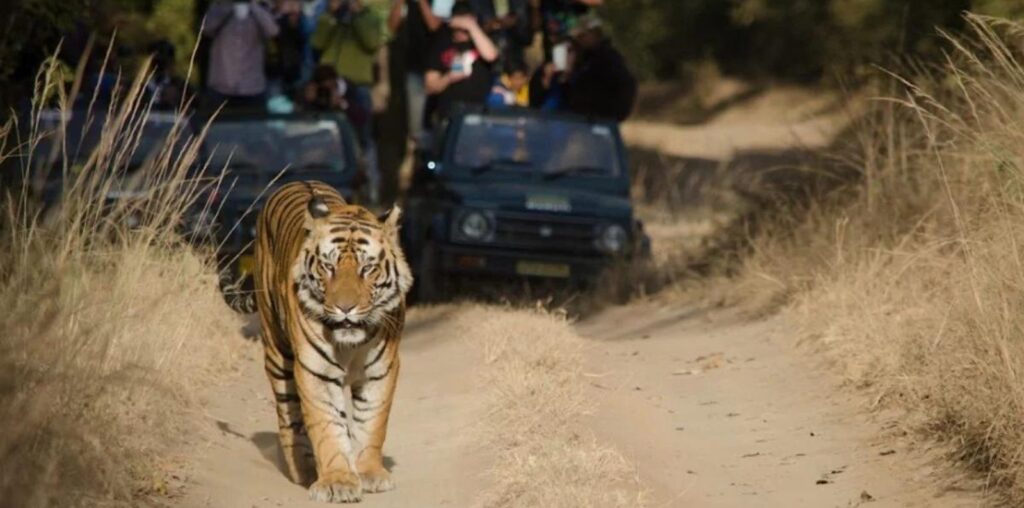Located in the holy city of Haridwar, Mansa Devi Temple is one of the most revered shrines in India, dedicated to Maa Mansa Devi, the goddess who is believed to fulfill the wishes of devotees. Situated on the Bilwa Parvat, a hilltop that offers panoramic views of the sacred town, the temple is a significant part of the Char Dham Yatra and holds immense importance for pilgrims who come to seek the blessings of the goddess. Known for its spiritual significance, serene surroundings, and breathtaking views, the Mansa Devi Mandir in Haridwar is a must-visit for those seeking both divine blessings and a peaceful retreat.
The Significance of Maa Mansa Devi Mandir Haridwar
Maa Mansa Devi is a manifestation of the divine feminine energy in Hinduism. According to legend, she is said to be the incarnation of the mind (Mansa) of Rishi Kashyapa and is believed to be the sister of the famous serpent god Vasuki. Pilgrims believe that offering prayers at the Mansa Devi Temple Haridwar can lead to the fulfillment of their wishes, as the goddess is considered the bestower of peace, prosperity, and happiness. It is said that if you tie a thread around the temple’s sacred tree after making a wish, the goddess will fulfill it, and upon fulfillment, you must untie the thread as an offering of gratitude.
The temple is particularly crowded during the Navratri festival, a nine-day celebration dedicated to the goddess Durga, and on auspicious days like Makar Sankranti and Akshay Tritiya, when thousands of devotees flock to the temple to pay homage and seek the goddess’s blessings.
Mansa Devi Mandir: Location and Accessibility
The Mansa Devi Temple is situated on Bilwa Parvat, which is a hill located approximately 3 km from Haridwar’s main town. Pilgrims can reach the temple either by taking a ropeway ride, which offers a breathtaking view of Haridwar and the Ganges River, or by trekking up the hill, which is a more adventurous option. The ropeway is a popular choice as it is convenient and provides a scenic experience. The trek to the temple involves around a 2 km uphill walk, and it’s suitable for those who enjoy a physical challenge, while also offering an opportunity to connect with nature.
Mansa Devi Temple Rishikesh: A Sister Temple to the One in Haridwar?
While Mansa Devi Temple Haridwar is the more famous of the two, there is another temple dedicated to Maa Mansa Devi in Rishikesh, located around 25 kilometers from Haridwar. The Mansa Devi Temple Rishikesh is equally revered by devotees, although it is less frequented by tourists compared to the temple in Haridwar. This temple, situated near the banks of the Ganges River, provides a more tranquil atmosphere for worship, attracting pilgrims seeking peace and solace in the divine presence of the goddess.
Mansa Devi Mandir: Spiritual Experience and Rituals
When visiting the Mansa Devi Temple, devotees can participate in various rituals, including:
- Puja and Aarti: The temple hosts regular pujas (rituals) throughout the day, including the famous Mansa Devi Aarti in the evening, which is accompanied by devotional songs and chants that fill the air with spiritual energy.
- Wish Fulfillment: As part of the tradition, devotees tie threads around a sacred tree after praying for the fulfillment of their wishes. Once their wishes are granted, they return to untie the threads in gratitude.
- Prasad: After worship, pilgrims receive prasad (blessed offerings), typically consisting of sweet treats that are distributed among devotees as a symbol of the goddess’s blessings.
Best Time to Visit Mansa Devi Temple
The best time to visit the Mansa Devi Mandir is during the months of March to June and September to November when the weather in Haridwar is pleasant and ideal for pilgrimage. The summer months (March to June) offer a warm, sunny climate, while the autumn months (September to November) provide clear skies and moderate temperatures.
Devotees should avoid visiting during the monsoon season (July to September) due to heavy rainfall and potential landslides, which can make trekking to the temple challenging.
How to Reach Mansa Devi Temple
- By Road: Haridwar is well-connected to major cities like Delhi, Dehradun, and Rishikesh by road. Private buses, taxis, and state transport buses frequently ply the route, making it convenient for pilgrims to reach Haridwar and then travel to Mansa Devi Mandir.
- By Train: Haridwar Railway Station is a major railway junction that connects to various parts of India. Once you arrive at the station, local taxis and auto-rickshaws are available to take you to the temple.
- By Air: The nearest airport to Haridwar is Jolly Grant Airport in Dehradun, located approximately 35 km away. From the airport, you can hire a taxi to Haridwar and then head to the Mansa Devi Mandir.
Nearby Attractions
While visiting Mansa Devi Mandir, you can also explore other significant temples and spiritual sites in Haridwar, such as:
- Har Ki Pauri: A sacred ghat on the banks of the Ganges, known for its mesmerizing Ganga Aarti.
- Chandi Devi Temple: Another important temple dedicated to Goddess Chandi, located on the Neel Parvat.
- Rajaji National Park: For nature lovers, the national park is an excellent place to spot wildlife and enjoy scenic views of the Shivalik hills.
In Rishikesh, you can explore spiritual spots like Triveni Ghat, Parmarth Niketan Ashram, and the famous Lakshman Jhula bridge that connects the two banks of the river.
Mansa Devi Haridwar: A Unique Pilgrimage Experience
The Mansa Devi Temple in Haridwar is not just a place of worship, but a powerful spiritual retreat. It offers devotees the chance to connect with the divine while enjoying the serene beauty of the Himalayan foothills. Whether you are in search of blessings, peace, or simply seeking to experience the sacred atmosphere of Haridwar, the Maa Mansa Devi Mandir Haridwar is a must-visit for those on a spiritual journey.
The Mansa Devi Mandir in Haridwar, along with the other temples in the region, provides an unforgettable pilgrimage experience, where prayers are answered, wishes are fulfilled, and the soul finds solace in the presence of the divine.



